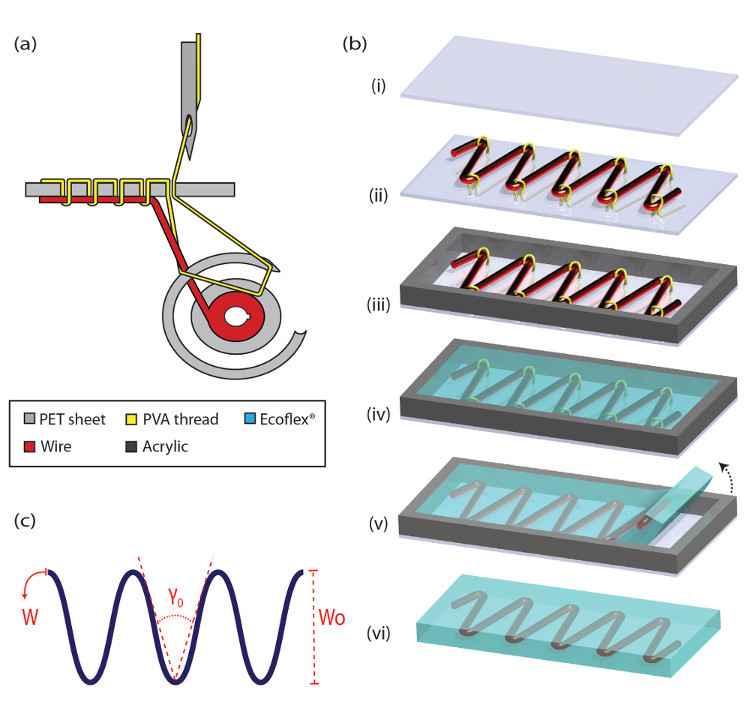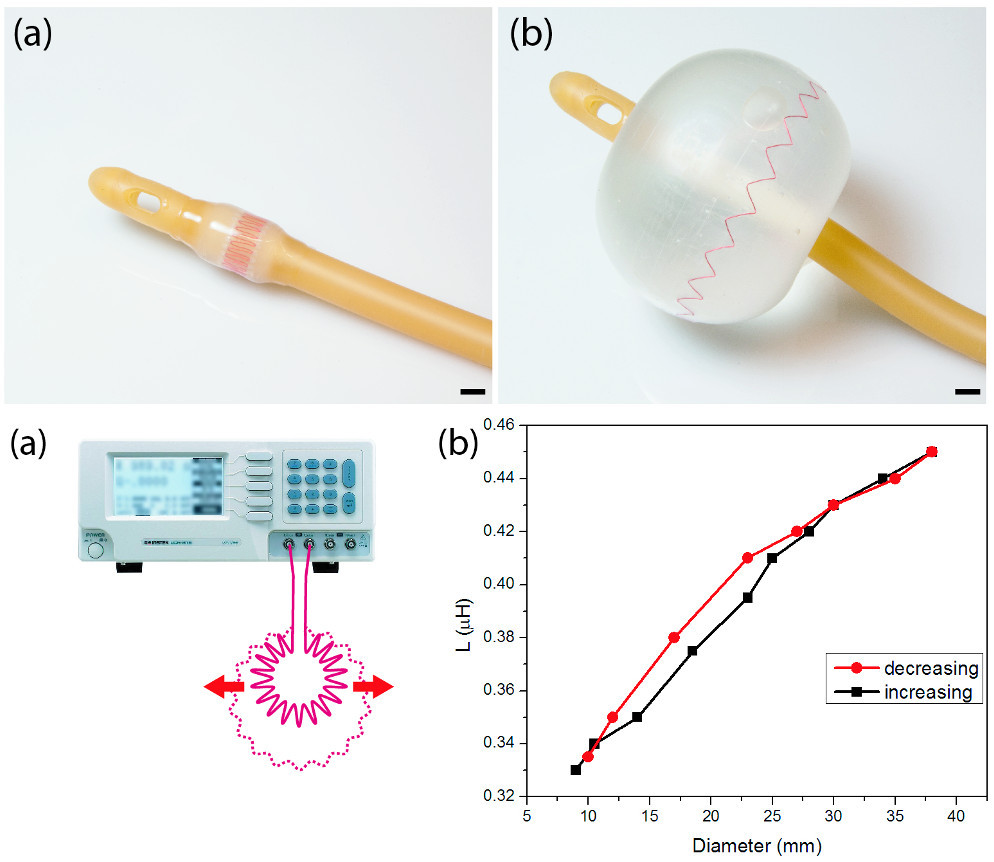Witty method of making elastic conductors with a sewing machine

Today it is difficult to imagine a scientist or engineer who does not use complex and expensive equipment and exotic materials inaccessible to mere mortals. Still, sometimes impressive results are achieved by the simplest means. So, Geim and Novoselov received the Nobel Prize for researching the properties of graphene, which they received using ordinary scotch tape, repeatedly stratifying grains of graphite with adhesive tape - this method is still widely used in laboratories around the world. Recently it was discovered that graphene can be obtained from a graphite slurry using a household blender and dishwashing liquid. Or, for example, a method of making artificial "muscles" from an ordinary fishing line .
As computer components become smaller, the prospect of creating smart clothes, medical equipment, prostheses, and implants with integrated sensors and processors looks more and more real. The proximity of these objects to the human body dictates the need to make them soft and supple. For electronics, this is a big problem, because computers are made of silicon and metal. One of the sides of this problem is the creation of elastic conductors connecting the components. Different variants are offered - up to polymer capillaries filled with liquid metal . Purdue University, which is the traditional “forge of personnel” of the US aviation and space industry, developed the technology for creating flexible conductors using a sewing machine, thin copper winding wire, PVA filament and silicone.
The essence of the method is very simple - a polyethylene base is taken and a zigzag stitch is made on it - almost any sewing machine can do it. As you know, the machines are sewn with two threads - one is on top and is threaded with a needle, the other is fed from below and intertwines with the first, forming a seam. A water-soluble PVA filament , which can be purchased at a fishing store, was taken as the top thread, and a thin winding copper wire was taken as the bottom thread. Thus, the conductor turned out to be neatly laid out in a zigzag and secured to the plastic film. After that, the film on the conductor side was filled with Ecoflex silicone, and after hardening for several hours, the PVA thread was dissolved in water and the polyethylene base was removed.
')

The end result is a thin and elastic silicone tape with a conductor inside. Silicone reliably protects the conductor and evenly distributes the tensile load. The tape withstands 120,000 stretch-compression cycles at 30% length, 50,000 - at 55% and 15,000 - at 110%. The limiting increase in length with the most dense zigzag can reach 500%, but the number of cycles during extreme stretching decreases sharply - the wire begins to break at the folds.

Scientists have also demonstrated the possibility of using such a flexible conductor in real medical equipment. They made a stretch sensor for a Foley catheter that is used in urology. The catheter is a rubber tube with an inflatable tip. The sensor allows you to control the degree of inflation of the catheter inside the bladder. The principle of the sensor is based on measuring the inductance of a ring conductor - it varies in proportion to the diameter of the coil.
Source: https://habr.com/ru/post/225515/
All Articles